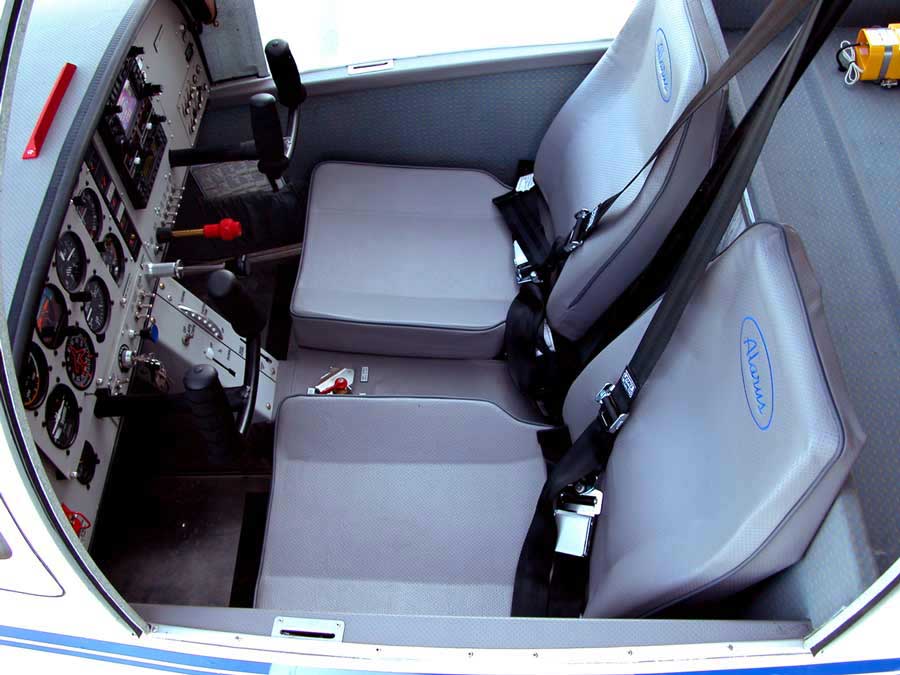|
||
|
Trainer
ALARUS CH2000 FAA CERTIFIED AIRCRAFT
Now you can install the Aspen Avionics! The Alarus definitely has the right stuff. It is simple, tough and easy to maintain. Its large cabin, high-end avionics, low fuel burn and excellent flight characteristics make it the perfect trainer or personal aircraft. The Alarus is FAA type certified Utility/Normal and IFR. This is NOT a Light Sport Aircraft (LSA). It looks similar to any other classic low wing aircraft. What makes it unique is that you can buy one new today with all the latest high-tech components! Designed for today's pilot with a large comfortable cabin area, excellent avionics, and inexpensive operation (5.5 gallons per hour) the Alarus is a solid investment. The Alarus is undoubtedly the toughest simplest metal light aircraft in production. The all metal, semi-monocoque stressed skin construction with internal ribs, longerons, and bulkheads distribute the loads. It is simple, tough and easy to inspect and repair, a huge benefit for flying schools.
The nose gear system is not attached to the engine mount or directly to the firewall. No olio type system, no oil seals. Instead a simple self-centering super tough bungee system is used. Direct nose wheel steering makes it easy to taxi the aircraft without using the brakes. At the rear of the fuselage, a massive aluminum tailskid is attached. The tailskid has mount on rubber dampeners for hard landings Two different sizes of rudder are available for the 2000, the larger rudder, (used on the "spin certified option") and a smaller standard sized rudder that gives a classic effect when side slipping the aircraft and applying full and immediate rudder,. Large and responsive flight surface controls make landing even in cross winds of up to 25 knots possible.
The Lycoming 0235-N2C powerplant engine is mounted on a super beefy engine mount (painted yellow). Other than a smaller light weight starter, everything firewall forward is classic. This includes the Sensenich propeller, carburetor air intake filter, muffler system etc. The powerplant area is very similar to the old Cessna 152 installation, using similar parts, a big plus for flying schools who do not have to retrain their mechanics. The cockpit area is manufactured out of Carbon Fiber with moulded windshield and side windows (making in flight visibility outstanding). It fits perfectly on the metal airframe (fuselage + wings). The butterfly (gull) doors open on a generous cabin of about 46 inches wide. Seats are extremely comfortable using the NASA type Tetra foam, designed for 26g load absorption, and covered with an elegant micro porous grey leather-like fabric. The latest safety belts are also easy to buckle: the lower-side belt having been extended. The centre section of the seat belts are fastened to the main wing spar and the roll-over-protection tube between the seats. The AmSafe airbag seat belt system is now available (optional equipment).
The controls feel great comparable to driving a new car versus an old one, without slack and are not sloppy. There is positive feedback so that you feel the aircraft. The rate of climb is quite amazing for a small 116 HP engine. At a gross weight of 1,692 lbs., the indicated rate of climb at 63 Knots is +800 foot per minute. Cruise is slow between 95 and 100 Knots superb for student pilots.
The Alarus is the best new training aircraft on the market today. Improvements made over the years have made this aircraft a winner in flying schools. The aircraft comes equipped IFR with dual nav/com's of which one is the Garmin GNS 430. A Classic airframe coupled with modern avionics makes the Alarus CH2000 a must have for any flight school.
|
||
|
|
Prices, performances, specifications and all other information on this web site is subject to change without notice. Please contact Zenair Ltd. for all up-to-date information. © Zenair 08/2013
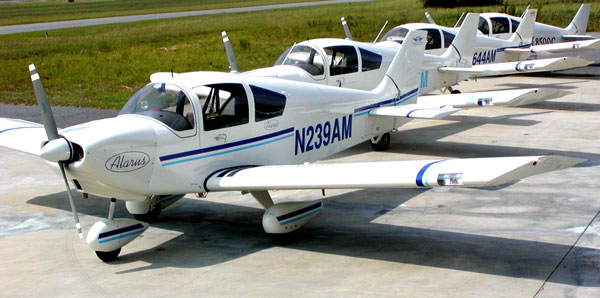
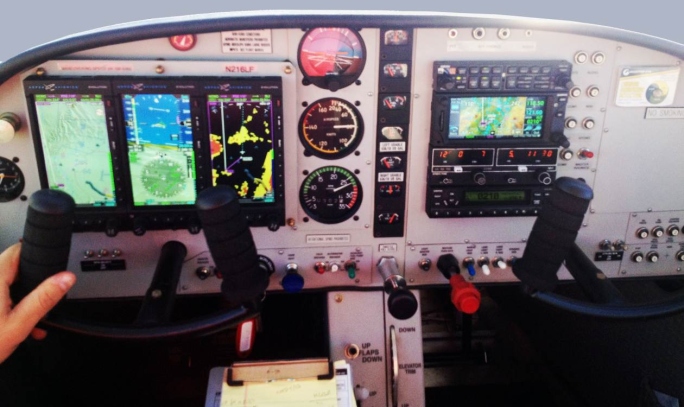
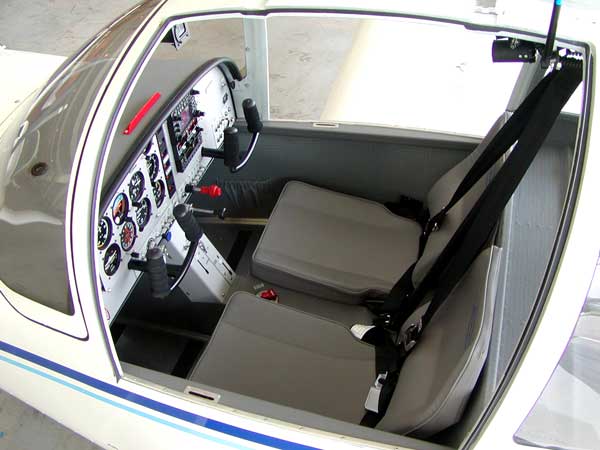 With the landing gear system containing a 65 lbs. piece of metal extending from one wheel to the other a lot of energy is absorbed on hard landings minimizing bouncing and ultimately making for smoother landings. (Spring steel tubing is used on most aircraft. On hard landings, the aircraft bounces back into the air.) New type wheel axels are used, similar to other certified aircraft making the CH2000 maintenance friendly for Mechanics.
With the landing gear system containing a 65 lbs. piece of metal extending from one wheel to the other a lot of energy is absorbed on hard landings minimizing bouncing and ultimately making for smoother landings. (Spring steel tubing is used on most aircraft. On hard landings, the aircraft bounces back into the air.) New type wheel axels are used, similar to other certified aircraft making the CH2000 maintenance friendly for Mechanics.
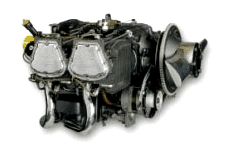
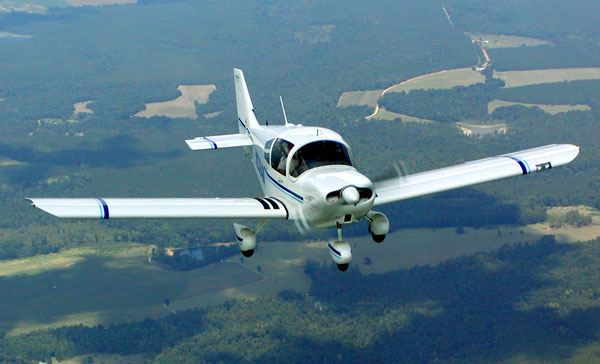
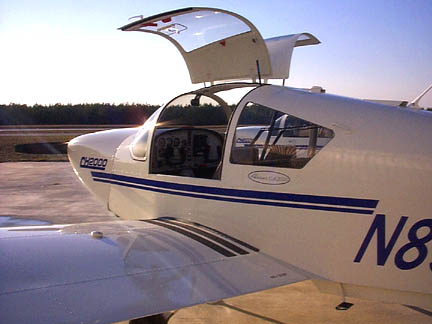 A surprising feature of the Alarus is the positive controllability of the tail and ailerons at the stall. The Flight Manual recommends 60 Knot speed on final. Flaring the aircraft under the stall speed is simple, especially when trimming the stabilator by using the new manual trim wheel. It is exceptionally effective and requires little effort to adjust yoke forces. Like most low wing aircraft, the Alarus "sticks" to the ground when landing and does not "float" down the runway.
A surprising feature of the Alarus is the positive controllability of the tail and ailerons at the stall. The Flight Manual recommends 60 Knot speed on final. Flaring the aircraft under the stall speed is simple, especially when trimming the stabilator by using the new manual trim wheel. It is exceptionally effective and requires little effort to adjust yoke forces. Like most low wing aircraft, the Alarus "sticks" to the ground when landing and does not "float" down the runway.
